Deliberate Wellness for Seniors
Wellness: the quality or state of being healthy in body and mind, especially as the result of deliberate effort.
Lost your password? Please enter your email address. You will receive a link to create a new password.

Wellness: the quality or state of being healthy in body and mind, especially as the result of deliberate effort.

For some, the month of March signifies a period of transition and transformation – from dark to light. Our modern species gravitates toward a tendency to want to hurry into Spring, Summer and then the holidays. Leave the darkness behind. Say goodbye, farewell and good riddance to the days marked as short by the diminished presence of light. Go. Go. Go. Our bodies and brains remember a time when fear served us. All of the physiological responses that go along with stress are activated in our body, even when our current situations do not necessitate us fleeing for our life. This begs the question, how can we allow March, April and the events that follow in the lengthening of days, to unfold in a way that is calm, reflective and appreciative of what has been gained in the darkness of winter?

Perhaps another perspective of darkness, is a recognition that there are light sources that only exist because of darkness – stars, phosphors and chemical reactions, to name a few. From the celestial to the terrestrial we all have the capability for being self-luminous.
Now, for others the month of March might be thought of as a verb, which connotes adopting a rhythmic stride. We can create a rhythm by physically marching, or we can turn inward to our natural rhythms (e.g., breath rate, heartbeat, circadian, etc.). According to findings in a recent study, it is suggested that cognitive functioning increases with the adoption of rhythmic step training.
The winter can be about a time of discovering the spaces where there is beauty in rest. Comfort in darkness. Appreciation for the remarkability of stillness. We are beginning the transition from Winter to Spring and not all needs to be left behind. In what ways can you find a place, in March and the about to unfold Spring days, for the stillness you cultivated in winter?
I invite readers to consider finding spaces where you can allow your own rhythmic stride to unfold. How might you honor and appreciate the stillness you cultivated in Winter?
Let’s engage in a 1-minute practice of honoring our internal rhythms and light.
Where you are right in this moment is the perfect place to practice. You have everything you need.
Repeat steps one through four.
Dr. Adrienne Ione is a cognitive behavioral therapist and personal trainer who integrates these fields in support of people thriving across the lifespan. As a pro-aging advocate, she specializes in the self-compassion of dementia.
Website: yes2aging.com
Guided Meditations: insighttimer.com/adrienneIone
Facebook: silverliningsintegrativehealth
References
Park SK, Jee YS. Effects of Rhythm Step Training on Physical and Cognitive Functions in Adolescents: A Prospective Randomized Controlled Trial. Healthcare (Basel). 2022 Apr 12;10(4):712. doi: 10.3390/healthcare10040712. PMID: 35455889; PMCID: PMC9029147.

If you are one of the millions of people who suffer with neck pain, YOU ARE NOT ALONE! Do you spend hours hunched over your laptop? Are you constantly staring down at your phone? Is your stress level out of control? Do you lack self-care in the form of exercise and nutrition?

Whether we realize it or not, humans and trees have an organic connection with each other. We exhale the carbon dioxide that trees absorb. Trees emit the oxygen that humans need to live. Many cultures – both ancient and modern – have recognized this interdependency. Nearly every pre-industrial people group has had traditions, ceremonies, and medical practices tied to trees.
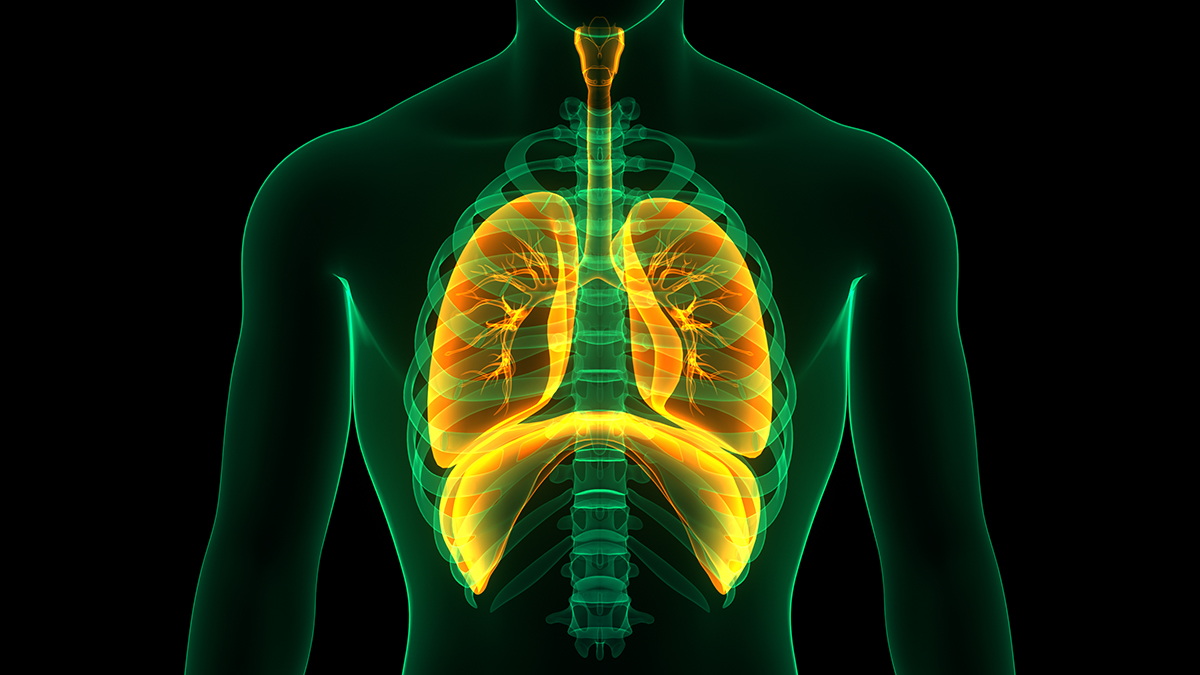
Diaphragmatic breathing is a technique that involves engaging the diaphragm muscle while breathing, allowing for more efficient oxygen exchange in the body. This type of breathing can be beneficial for cardiovascular exercise performance, as it helps to increase the amount of oxygen that that is taken in with each breath. By doing so, diaphragmatic breathing can improve aerobic capacity, endurance, energy levels during exercise, as well as reduced feelings of fatigue and improve lung function.
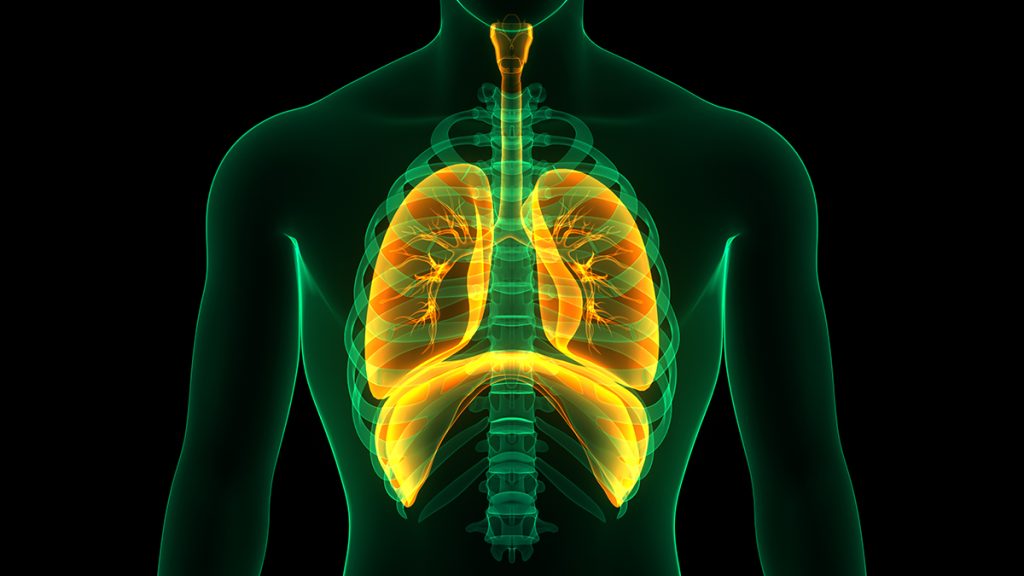
One study conducted in 2016 found that diaphragmatic breathing improved exercise performance in trained male cyclists. The study participants perform a maximal cycling test, during which they practiced diaphragmatic breathing. The results show that the cyclists who used diaphragmatic breathing had a significant improvement in their VO2 Max (the maximum amount of oxygen used during exercise), and power output compared to those who did not use diaphragmatic breathing. Another study conducted in 2015 found that diaphragmatic breathing improved respiratory muscle function and reduce breathing effort during exercise in both trained and untrained individuals. Diaphragmatic breathing can also help to reduce stress and anxiety, which can have a positive impact on exercise performance. Stress and anxiety can lead to increased heart rate, shallow breathing, and decreased oxygen uptake, which can negatively impact exercise performance. By practicing diaphragmatic breathing, individuals can reduce stress, anxiety levels and improve their ability to handle the psychological demands of exercise.
In addition to its benefits for exercise performance, diaphragmatic breathing can also have other health benefits. It has been shown to reduce blood pressure, improve lung function, and enhance overall relaxation and well-being. For individuals with respiratory conditions such as asthma, COPD, or bronchitis, diaphragmatic breathing can be a helpful technique for managing symptoms and improving respiratory function.
It is important to note that diaphragmatic breathing should not be relied upon as a sole method for improving cardiovascular exercise performance. It is best used in combination with other techniques, such as proper warm up and cool down, a balanced intense exercise program, adequate nutrition, rest, and recovery. In addition, it is important to consult with a healthcare professional before incorporating diaphragmatic breathing into any exercise routine, especially if an individual has any pre-existing health conditions.
In conclusion, diaphragmatic breathing can be a useful technique for improving cardiovascular exercise performance. By increasing oxygen uptake, reducing stress, anxiety, and improving lung function, diaphragmatic breathing can help individuals to perform better during exercise and enhance overall health and well-being. However, it should be used in combination with other techniques and under the guidance of a health care professional for maximum benefit.
Reprinted with permission from author.
Mike Rickett MS, CSCS*D, CSPS*D, RCPT*E is a nationally recognized health and fitness trainer of the trainers, fitness motivator, author, certifier, educator, and the 2017 NSCA Personal Trainer of the Year. He has been a fitness trainer for more than 35 years. With Cheri Lamperes, he co-directs BetterHealthBreathing.com, a conscious breathing educational program focusing on the diaphragmatic technique to enhance overall wellness. In addition, he also directs the personal training site ApplicationInMotion.com.
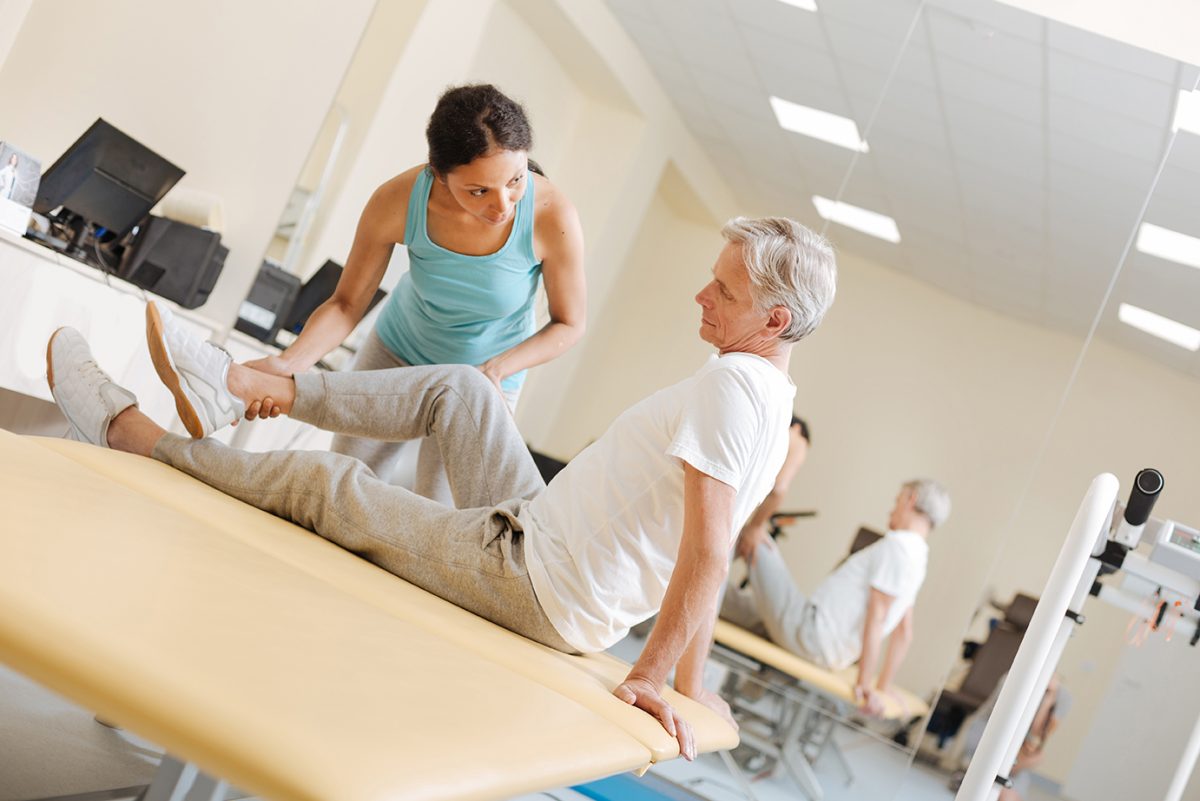
Musculoskeletal injuries from trauma, repeated activities, or overused joints or muscles are very common — in fact, almost every one of us will get injured at some point in our lives. Most of the time, it will reoccur and become more serious when left unattended or untreated. When repeated injuries happen, it is very likely not due to a one-off fluke.
So why do we constantly get hurt at a specific joint or muscle? And why does the pain seem to travel elsewhere after?
The human body is complex and designed to move in countless movement patterns. When we move, kinetic energy travels from our feet to our neck and head. This concept is called the Human Body Kinetic Chain Movement. Our skeletal system consists of various joints linked in a chain, each with specific purpose and function.
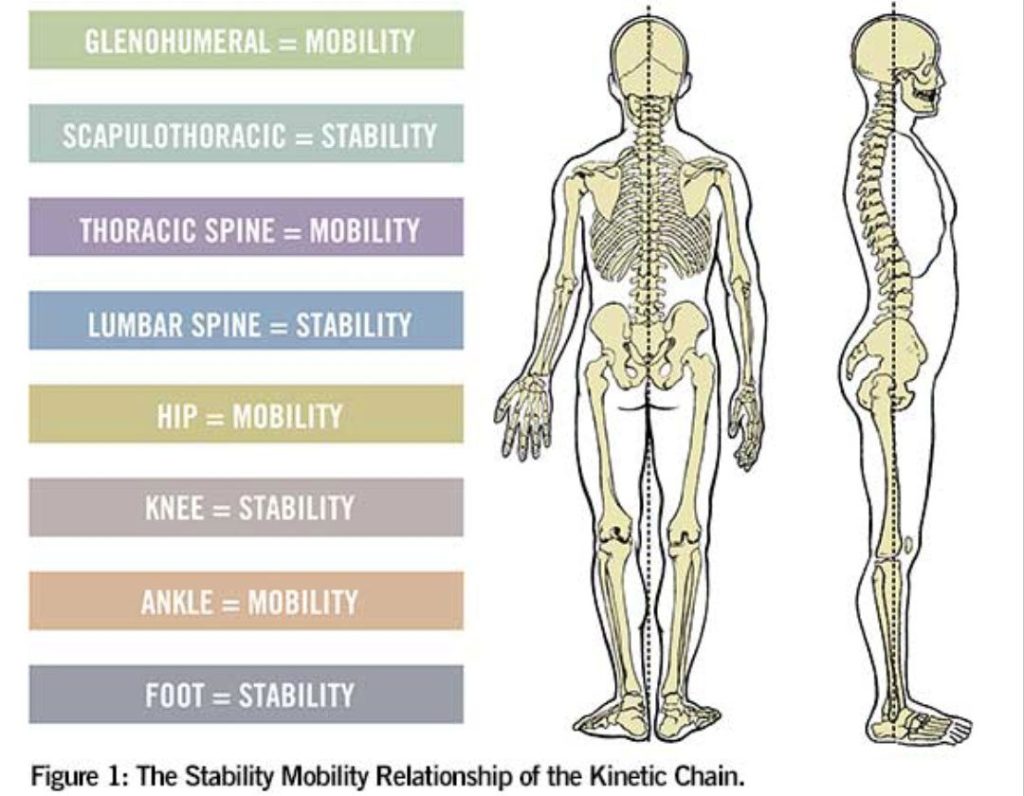
When our joint is not functioning as it is intended to, our body will adopt a dysfunctional movement, which can lead to acute pain in our joints or muscles. If not corrected, chronic pain can happen. A sedentary lifestyle, past injuries, poor posture and misalignment, stress, health conditions, diseases, and other factors can lead to the development of dysfunctional movement.
Here’s an example of a common dysfunctional movement at the lower proximity. If your ankle (which is supposed to be mobile) is stiff, your body will seek mobility at the knee which is supposed to act as a stable hinge. A painful knee typically develops as a result. In another scenario, if you spend extended periods of time sitting and experience restricted mobility at your hips, your body may compensate by seeking mobility at your knee or lumbar spine. This reversal of joint roles can lead to injury or pain in the affected joint or muscle.
Continuing to compensate for the long term can cause a cascading effect such as muscle imbalances, poor neuromuscular function and muscle atrophy or hypertonicity.
One of the common mistakes we make is to only address the symptom (pain) with the use of NSAIDs, massage, chiropractic therapy and other non-invasive or invasive treatments, rather than addressing the underlying cause of the problem.
Another widespread misunderstanding is the idea that simply strengthening the muscle at a joint can solve the problem, without considering its kinetic chain relationship. For example, strengthening the quadriceps to alleviate knee pain, without taking into account the mobility of the ankles and hips or the stability of the lumbopelvic area.
That’s why it’s crucial to have a comprehensive understanding of how our bodies are designed to move, and to identify any weak links in our body’s kinetic chain to ensure optimal recovery through appropriate rehabilitation measures, and not view the problem in isolation.
Typically, it is advisable to conduct an assessment initially to pinpoint the root of the problem. However, when a patient presents to my clinic in pain, they often exhibit compensatory movement patterns that can yield false positives/negatives results. For this reason, my approach is to first identify the type of pain or injury they are experiencing and address their pain as a priority. To reduce their pain levels, I utilize methods such as soft tissue manipulation and other therapies that are appropriate for their condition.
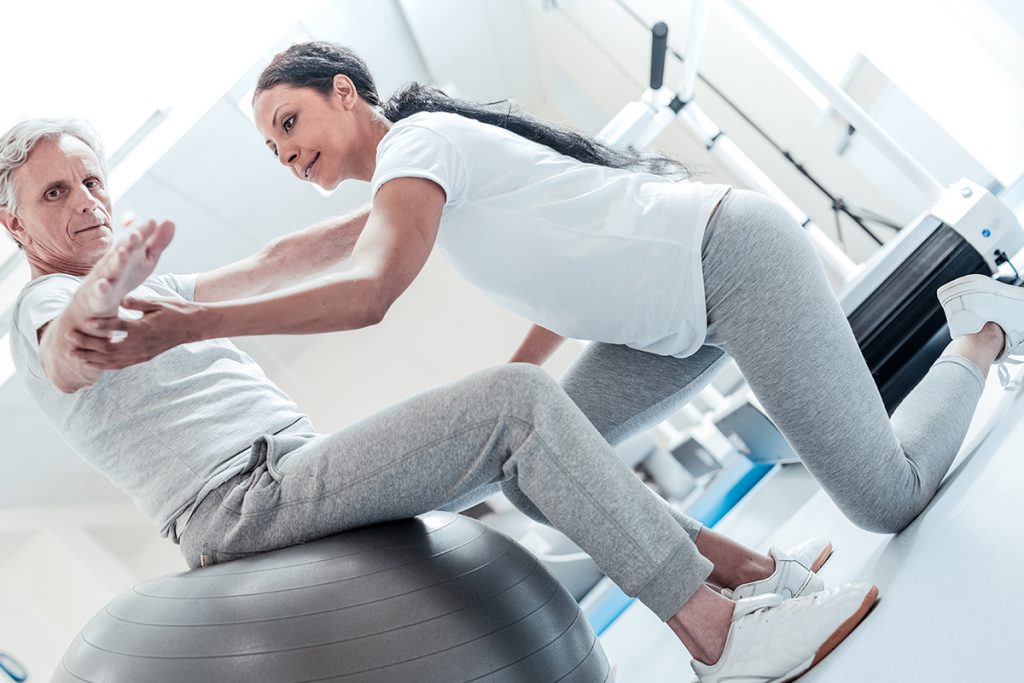
Soft tissue manipulation and manual therapy, such as massage has been proven to:
It is best to engage a practitioner who is trained or skilled in this field, or perform self myofascial massage by using a foam roller or trigger point massage ball under guidance.
Once the pain has been adequately managed, I will proceed with a thorough assessment to identify any potential weak links in the person’s kinetic chain. After that, they will begin an active treatment program that includes targeted stretches, mobility drills, and muscle reactivation exercises through a set of neuromuscular exercises. The rehabilitation program also emphasizes teaching the person to disassociate their movements and joints through specific exercise drills, which re-trains their brain to use their muscles and joints as it is supposed to. As soon as they are able to correct their dysfunctional movement, it is highly recommended to strengthen the entire structure based on function, rather than relying solely on brute strength.
Understanding the concept of our body’s biomechanics and how kinetic chain work can help you better manage or even resolve musculoskeletal injuries holistically, and not just detaching the problem to a specific joint or muscle.
Do take note that different types of musculoskeletal injuries may require different forms of therapy or approach. It is extremely important to seek a professional’s help to determine the appropriate care for your musculoskeletal pain or injury.
Ke Wynn Lee is an author and an international award-winning corrective exercise specialist currently owns and operates a private Medical Fitness Center in Penang. Apart from coaching, he also conducts workshops and actively contributes articles related to corrective exercise, fitness & health to online media and local magazines.
References
Field, T. (2014). Massage therapy research review. Complementary Therapies in Clinical Practice.
Moyer, C. A., Rounds, J., & Hannum, J. W. (2004). A meta-analysis of massage therapy research. Psychological Bulletin.
Crane, J. D., Ogborn, D. I., Cupido, C., Melov, S., Hubbard, A., Bourgeois, J. M., & Tarnopolsky, M. A. (2012). Massage therapy attenuates inflammatory signaling after exercise-induced muscle damage. Science Translational Medicine.
American Council of Exercise (ACE)
National Academy of Sports Medicine (NASM)
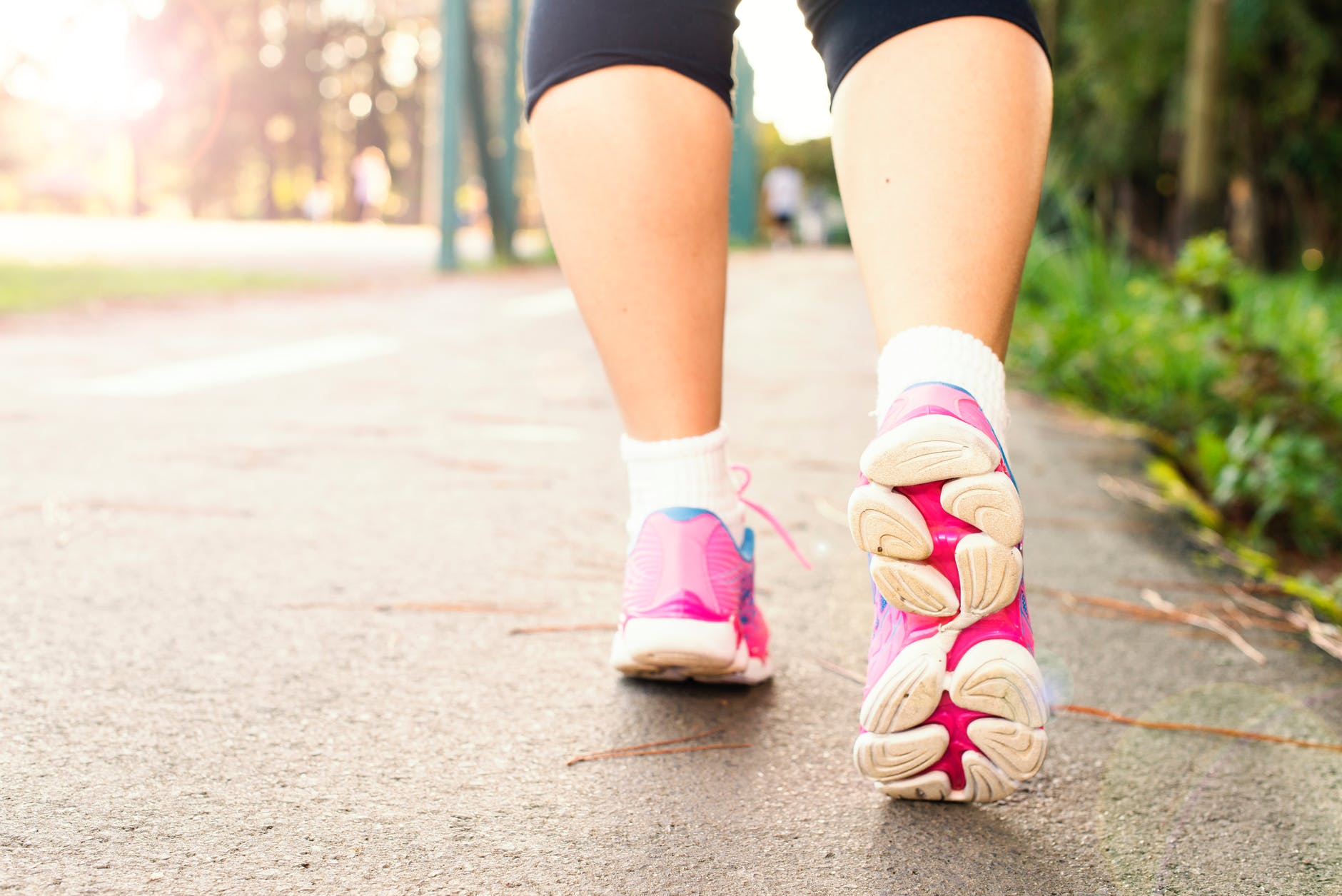
Walking is our freedom to GO anywhere, anytime, automatically, to get somewhere ‘on our own’ without fear or assistance.
It is the antithesis to the slipper shuffle and a key player in fall resistance, that is, staying UP. A shorter, wider stride, stiffer ankles and feet, and a hunched posture are not a function of aging per se. We CAN be spry, walk tall, with spring in our step, well into our 80’s and 90’s.
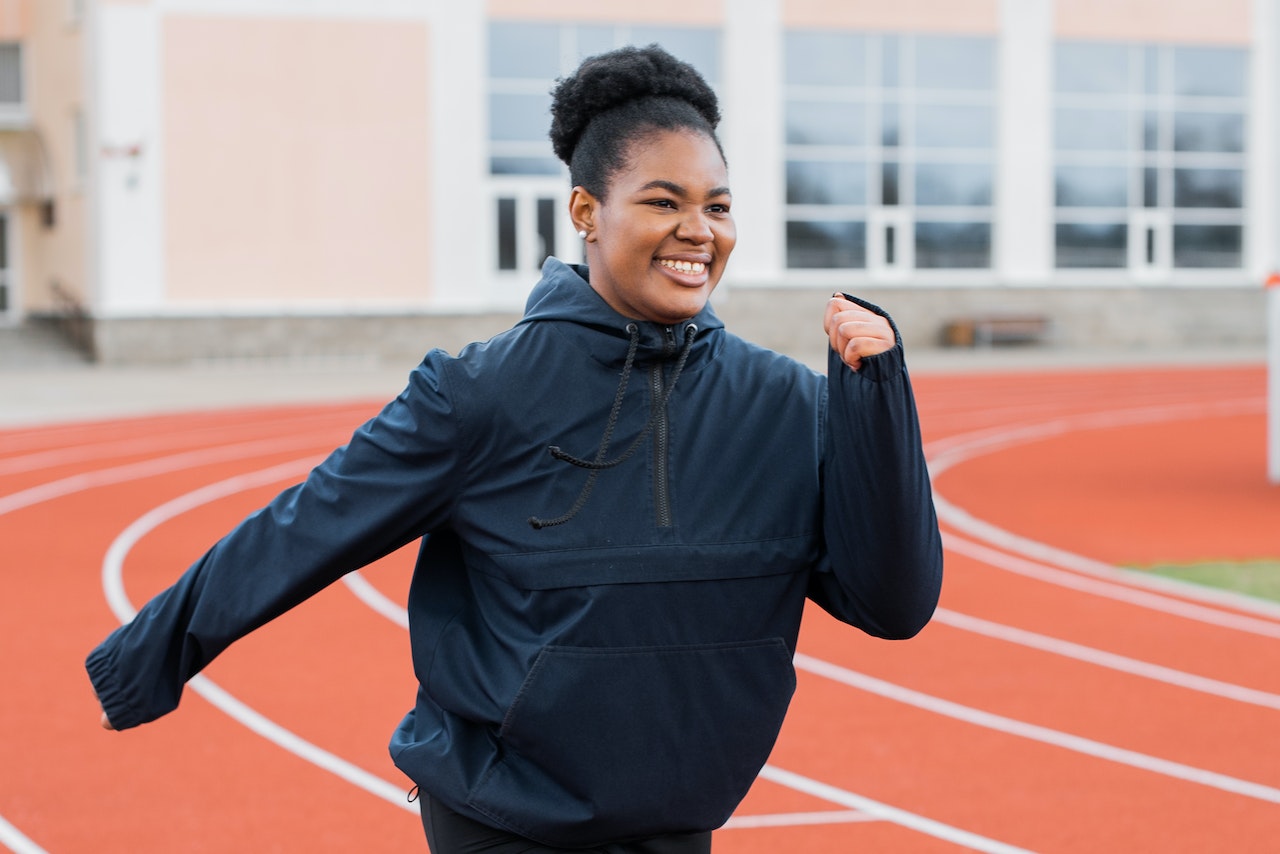
One of the most common questions I encounter, especially with prospective new clients, is how exactly does exercise improve mental health? Exercise actually affects mental health in several ways.
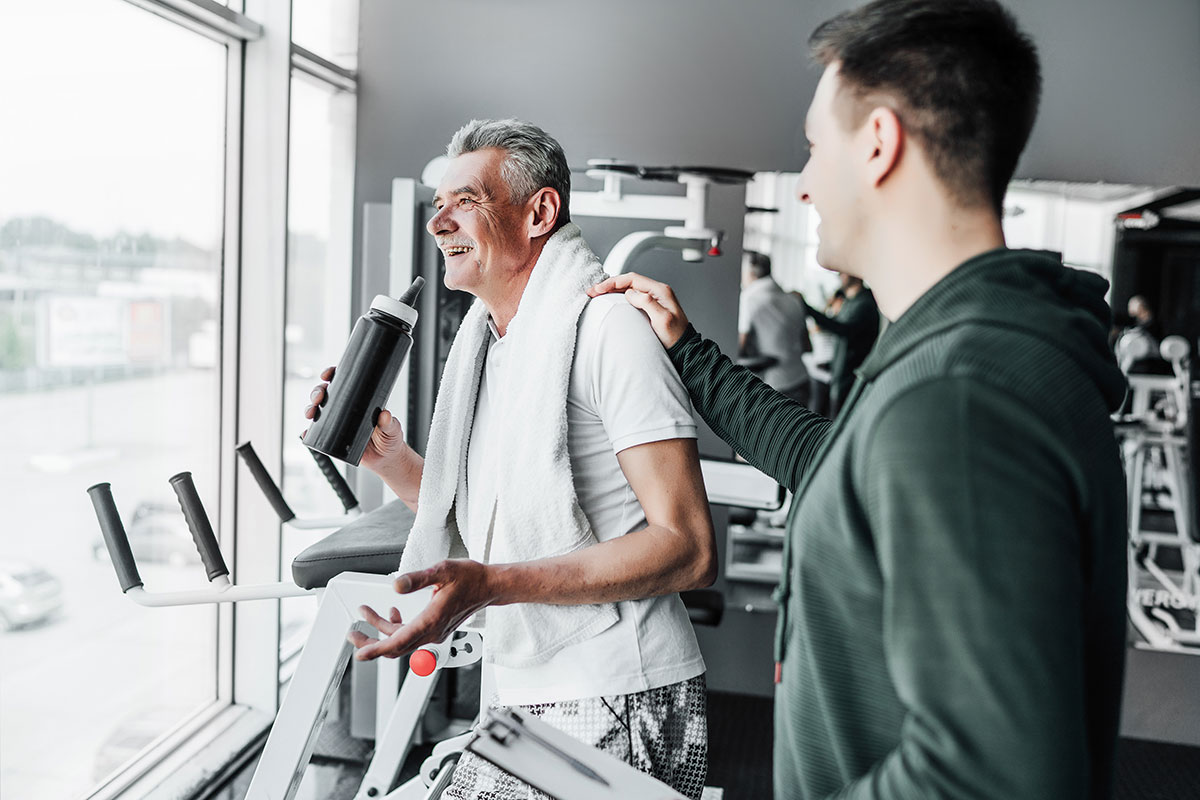
I want you to think differently about exercise. We have to understand that exercise is not only about body builders and gyms. Being strong leads to a better quality of life. Training for fitness gives us the ability to manage